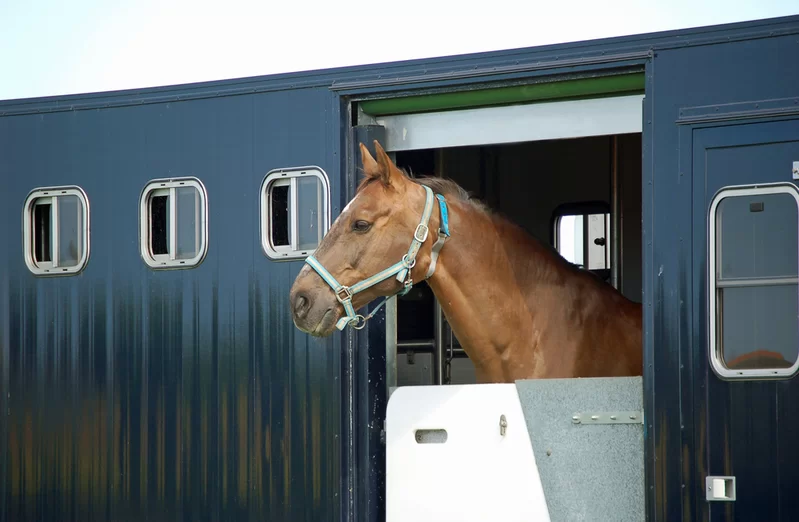Horse Transport: Best Practices for Safety
Transporting horses safely is crucial for their well-being and your peace of mind. Whether you’re heading to a competition, a new home, or a veterinary appointment, following best practices can ensure a smooth journey. Here are some essential tips for safe horse transport.
1. Choose the Right Vehicle
Type of Trailer
- Horse Trailer: Opt for a trailer specifically designed for horses, with appropriate ventilation and a sturdy floor.
- Size Matters: Ensure the trailer is large enough for your horse to stand comfortably, lie down, and turn around.
Vehicle Compatibility
- Ensure your towing vehicle is compatible with the trailer and can handle the weight of the loaded trailer safely.
2. Prepare Your Horse
Health Check
- Vet Check: Before transport, have your horse examined by a veterinarian to ensure they are fit for travel. This is especially important for long distances.
- Vaccinations: Make sure your horse’s vaccinations are up to date, particularly for diseases prevalent in areas you’ll be visiting.
Acclimatization
- Practice Loading: Familiarize your horse with the trailer by practicing loading and unloading at home. This reduces stress during the actual transport.
Calm Environment
- Consider using calming supplements if your horse is particularly anxious about travel. Always consult your vet before administering any medications.
3. Loading and Unloading
Safety First
- Use a Halter and Lead Rope: Always load and unload your horse using a halter and lead rope for better control.
- Stay Calm: Keep a calm demeanor to help your horse feel more secure. Speak softly and encourage them gently.
Proper Loading Techniques
- Load from the Front: In most trailers, loading from the front (head-first) is recommended to help the horse find their balance.
- Observe Weight Distribution: Ensure that weight is distributed evenly in the trailer to prevent swaying during transport.
4. During the Journey
Secure Your Horse
- Tie Safely: Use a quick-release knot to tie your horse inside the trailer. This allows for quick release in case of emergencies.
- Check for Hazards: Ensure that there are no sharp objects or hazards in the trailer that could injure your horse during transport.
Monitor Conditions
- Ventilation: Ensure proper ventilation inside the trailer. Open windows or vents as necessary to keep the air circulating.
- Temperature Control: Keep an eye on the temperature. In hot weather, take breaks to check on your horse and provide water.
5. Take Breaks
Regular Stops
- For long journeys, schedule regular stops to check on your horse’s condition. Offer water and let them stretch their legs if it’s safe to do so.
Hydration and Nutrition
- Depending on the length of the trip, consider providing hay or a small amount of grain, but avoid feeding immediately before or during travel to prevent colic.
6. Arrival and Unloading
Unloading Safely
- Calm Environment: When you arrive, take a moment to let your horse adjust to their new surroundings before unloading.
- Unloading Techniques: Unload calmly and carefully. Always unload in a controlled manner to prevent accidents.
Post-Transport Care
- Once unloaded, give your horse a thorough check for any signs of injury or distress. Allow them to settle into their new environment at their own pace.
Transporting horses requires careful planning and attention to detail to ensure their safety and comfort. By following these best practices, you can help your horse feel secure and minimize stress during the journey. Remember, a safe and well-prepared transport experience sets the foundation for a successful outing, whether it’s for competition or a simple move.




